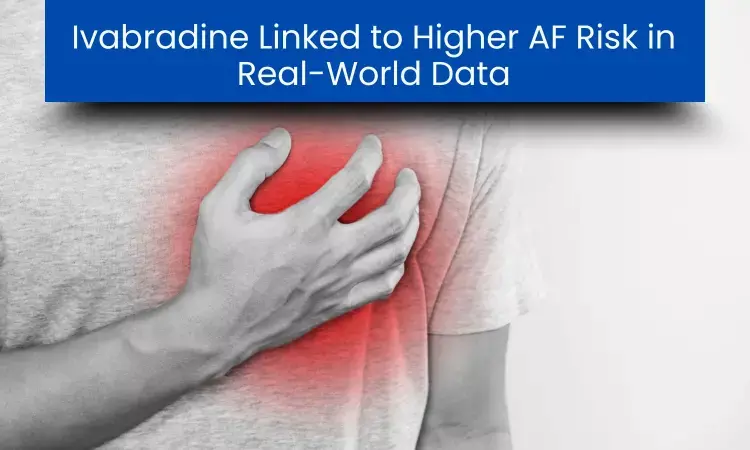- Home
- Medical news & Guidelines
- Anesthesiology
- Cardiology and CTVS
- Critical Care
- Dentistry
- Dermatology
- Diabetes and Endocrinology
- ENT
- Gastroenterology
- Medicine
- Nephrology
- Neurology
- Obstretics-Gynaecology
- Oncology
- Ophthalmology
- Orthopaedics
- Pediatrics-Neonatology
- Psychiatry
- Pulmonology
- Radiology
- Surgery
- Urology
- Laboratory Medicine
- Diet
- Nursing
- Paramedical
- Physiotherapy
- Health news
- Fact Check
- Bone Health Fact Check
- Brain Health Fact Check
- Cancer Related Fact Check
- Child Care Fact Check
- Dental and oral health fact check
- Diabetes and metabolic health fact check
- Diet and Nutrition Fact Check
- Eye and ENT Care Fact Check
- Fitness fact check
- Gut health fact check
- Heart health fact check
- Kidney health fact check
- Medical education fact check
- Men's health fact check
- Respiratory fact check
- Skin and hair care fact check
- Vaccine and Immunization fact check
- Women's health fact check
- AYUSH
- State News
- Andaman and Nicobar Islands
- Andhra Pradesh
- Arunachal Pradesh
- Assam
- Bihar
- Chandigarh
- Chattisgarh
- Dadra and Nagar Haveli
- Daman and Diu
- Delhi
- Goa
- Gujarat
- Haryana
- Himachal Pradesh
- Jammu & Kashmir
- Jharkhand
- Karnataka
- Kerala
- Ladakh
- Lakshadweep
- Madhya Pradesh
- Maharashtra
- Manipur
- Meghalaya
- Mizoram
- Nagaland
- Odisha
- Puducherry
- Punjab
- Rajasthan
- Sikkim
- Tamil Nadu
- Telangana
- Tripura
- Uttar Pradesh
- Uttrakhand
- West Bengal
- Medical Education
- Industry
Ivabradine Elevates Atrial Fibrillation (AF) Risk in Heart Failure Patients - Real world analysis

A real-world analysis published in JACC Advances concludes that heart failure patients prescribed ivabradine face a significantly higher risk of developing atrial fibrillation (AF) within 180 days compared with matched controls not receiving the drug. The study reports a more than sevenfold increase in AF risk among ivabradine-treated patients, underscoring the need for closer rhythm surveillance when initiating ivabradine in clinical practice.
Atrial fibrillation is the most common sustained arrhythmia, driven by rising cardiovascular disease burden, metabolic risk factors, and drug-induced mechanisms. In patients with heart failure, particularly those with reduced ejection fraction, AF contributes to recurrent hospitalizations and worsened outcomes.
Ivabradine, an HCN-channel blocker that lowers heart rate by inhibiting the funny current [I f] in the sinoatrial node, is approved for symptomatic NYHA class II–IV heart failure patients in sinus rhythm with resting heart rates ≥75 bpm despite guideline-directed therapy or intolerance to beta-blockers. Although ivabradine effectively reduces heart rate, evidence from meta-analyses and mechanistic insights have suggested a potential increase in AF incidence, prompting the need for real-world evaluation.
To address this, investigators conducted a retrospective nested-matched study using commercial and Medicare supplemental claims from the MarketScan database between 2009 and 2021. The cohort included adults with a diagnosis of heart failure who had continuous enrollment and were AF-naive at baseline. Ivabradine exposure was identified using the first recorded prescription fill, and eligible patients had no prior use of ivabradine. Individuals with documented cardiac dysrhythmias before the index exposure date were excluded. For controls, incidence-density sampling was used to select AF-naive heart failure patients who had not received ivabradine by the time each matched ivabradine patient initiated treatment. A 1:3 matching strategy was applied based on age groups, sex, index year, clinical comorbidities (including ACS/AMI, hypertension, diabetes, hyperlipidemia, HFrEF, and HF-related admissions), and use of HF guideline-directed therapies such as renin-angiotensin system inhibitors, beta-blockers, mineralocorticoid antagonists, and SGLT2 inhibitors.
AF onset within 180 days served as the primary outcome. Time-to-event analysis used Kaplan-Meier estimation, and comparative risk was assessed using a Cox proportional hazards model.
Of the 153 ivabradine-treated patients and over 4.4 million potential controls who met enrollment and AF-naive criteria, the final matched cohort included 107 ivabradine users and 321 controls. After matching, the two groups were well balanced for age (52.9 ± 11.3 vs 53.5 ± 11.8 years), sex (both 57% male), prevalence of HFrEF (66.4% for both), comorbidities, and background HF medications, including beta-blockers (89.7%), renin-angiotensin inhibitors (79.4%), and mineralocorticoid antagonists (39.3%). Despite balanced characteristics, the cumulative incidence of AF at 180 days was markedly higher in the ivabradine group (55.4%) compared with controls (10.1%). The adjusted hazard ratio for AF with ivabradine therapy was 7.293 (95% CI: 4.985–10.668), confirming a strong association in this real-world setting. The elevated risk appeared early after drug initiation, suggesting the effect may not be dose-related.
The authors note that while ivabradine-associated AF may reflect an association rather than direct causation, its mechanism of action, selective inhibition of the [I f] current, may interact with myocardial tissues known to trigger AF, such as pulmonary vein sleeves. They also highlight the potential influence of genetic variability, physiological heterogeneity, and intrinsic susceptibility among patients with heart failure. Importantly, the study acknowledges limitations inherent to claims-based research, including reliance on diagnosis codes, absence of mortality data, inability to capture dosing patterns or persistence, and potential unmeasured confounders. Confounding by indication remains a key consideration, as sicker patients may be more likely to receive ivabradine.
Nonetheless, the strength of association, supported by a matched design and large data source, signals that clinicians should be attentive to AF development when prescribing ivabradine in heart failure patients. The findings emphasize the importance of rhythm monitoring and reinforce the need for future studies to clarify mechanisms and refine patient selection
Reference: Kim K, Keur J, Anderson H, Radwański PB, Munger MA. Ivabradine and Atrial Fibrillation Incidence: A Nested Matching Study. JACC Adv. 2025 Oct 28;4(12 Pt 2):102282. doi: 10.1016/j.jacadv.2025.102282. Epub ahead of print. PMID: 41161035.
Dr Prem Aggarwal, (MD Medicine, DNB Medicine, DNB Cardiology) is a Cardiologist by profession and also the Co-founder and Chairman of Medical Dialogues. He focuses on news and perspectives about cardiology, and medicine related developments at Medical Dialogues. He can be reached out at drprem@medicaldialogues.in


